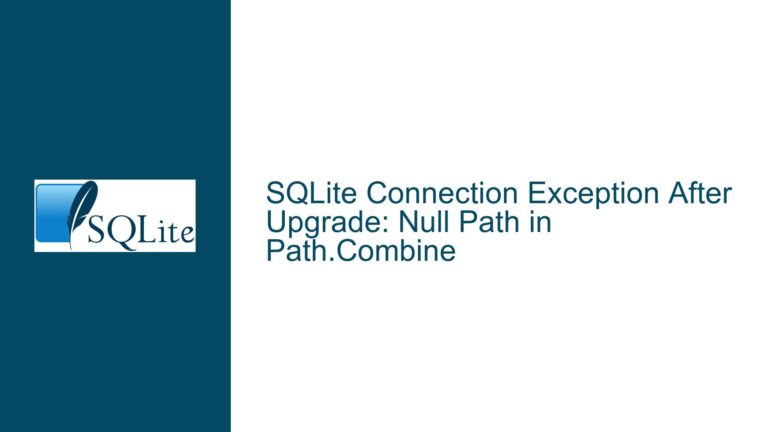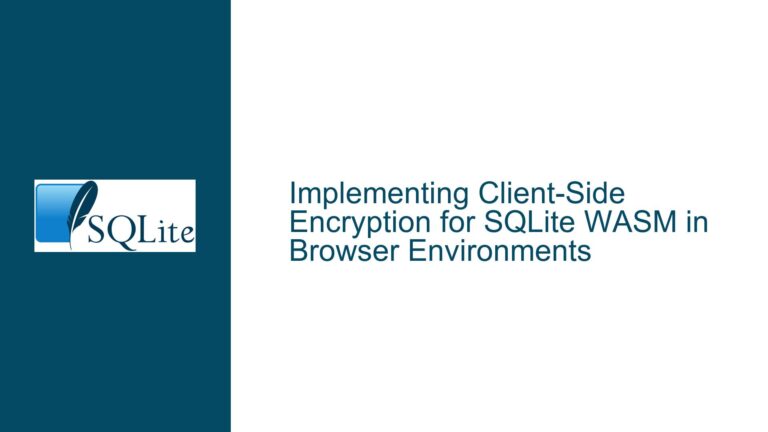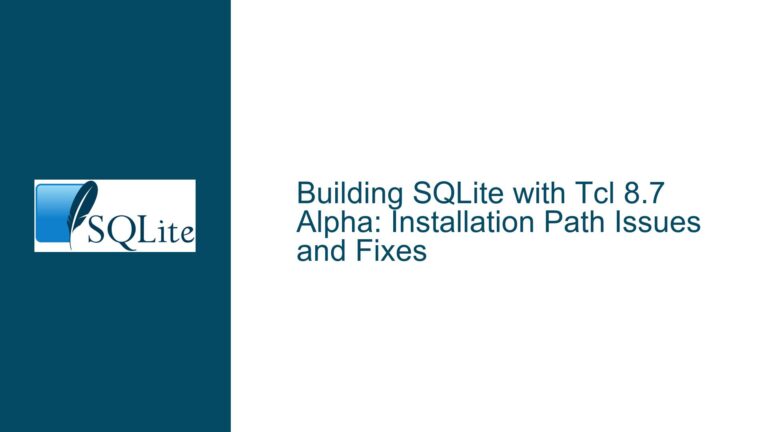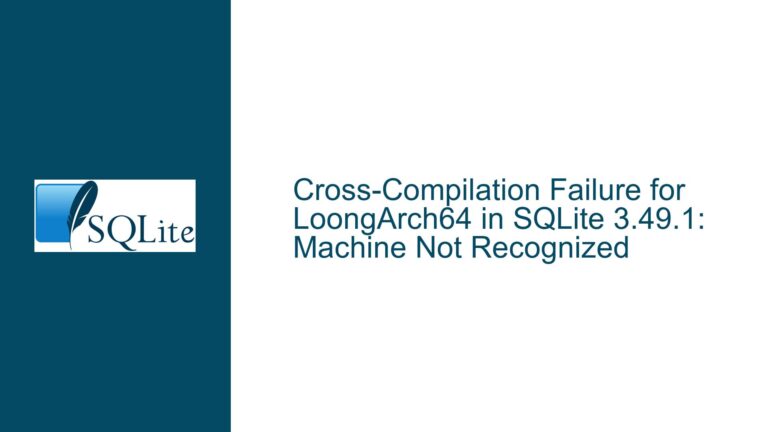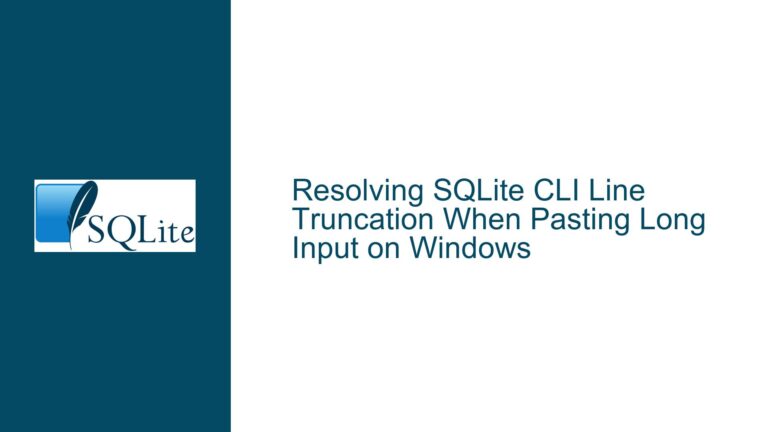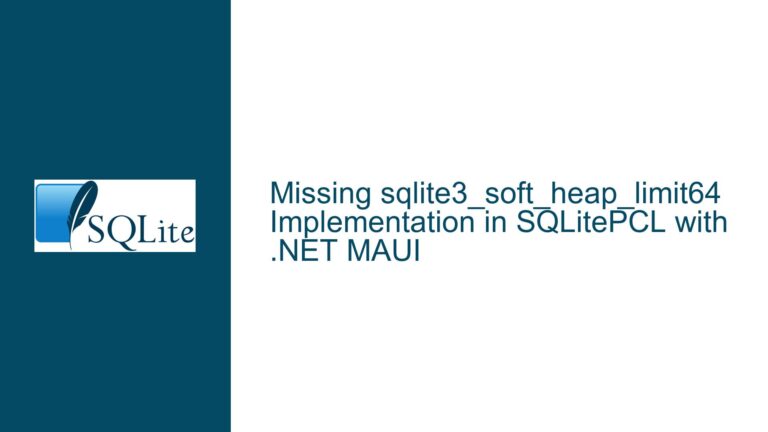Sharing SQLite In-Memory Database Across Multiple Processes: Misconceptions and Solutions
In-Memory Database Accessibility Across Multiple Processes
The core issue revolves around the accessibility of an SQLite in-memory database across multiple processes. SQLite is designed to be a lightweight, serverless database engine, and its in-memory database feature is typically used for temporary data storage within a single process. However, there are scenarios where developers attempt to share an in-memory database across multiple processes, often leading to confusion and unexpected behavior.
The in-memory database in SQLite is created using the special filename :memory:. When this filename is used, SQLite creates a database that resides entirely in RAM, and it is not persisted to disk. This makes it extremely fast for operations that require temporary data storage. However, the documentation clearly states that the in-memory database is only accessible within the same process. This means that if you create an in-memory database in one process, another process cannot access it directly.
Despite this, some developers have reported being able to share data across multiple processes using the file::memory:?cache=shared URI. This behavior contradicts the official documentation and raises questions about what is actually happening under the hood. The confusion often stems from a misunderstanding of how SQLite handles URI filenames and the shared cache feature.
URI Filenames and Shared Cache Misconfiguration
One of the primary reasons for the observed behavior is the misconfiguration or misunderstanding of URI filenames in SQLite. URI filenames allow for more complex database connections, including the ability to specify additional parameters such as cache sharing. When URI filenames are not enabled, SQLite treats the entire string as a literal filename. This means that if URI filenames are not enabled, the string file::memory:?cache=shared is interpreted as a filename rather than a URI, leading to the creation of a file on disk with that exact name.
In the case where URI filenames are not enabled, the database is not actually an in-memory database but rather a file-based database with a peculiar name. This file-based database can be accessed by multiple processes, which explains why data written by one process can be read by another. This behavior is not due to the in-memory database being shared across processes but rather due to the creation of a file on disk that is accessible to all processes.
Another factor contributing to the confusion is the shared cache feature. The shared cache feature in SQLite allows multiple database connections within the same process to share a common cache. This can improve performance by reducing the overhead of maintaining separate caches for each connection. However, the shared cache feature does not extend to multiple processes. Each process has its own memory space, and SQLite does not provide a mechanism for sharing memory between processes.
The combination of URI filename misconfiguration and the shared cache feature can lead to the illusion that an in-memory database is being shared across processes. In reality, the database is being stored on disk, and the shared cache feature is only applicable within a single process.
Enabling URI Filenames and Proper In-Memory Database Usage
To ensure that an in-memory database is used correctly and to avoid the pitfalls associated with URI filename misconfiguration, it is essential to enable URI filenames explicitly. This can be done by setting the SQLITE_USE_URI compile-time option or by enabling URI filenames at runtime using the sqlite3_config function. Once URI filenames are enabled, the file::memory:?cache=shared URI will be interpreted correctly, and an actual in-memory database will be created.
When URI filenames are enabled, the file::memory:?cache=shared URI creates an in-memory database that is shared among all connections within the same process. However, this database is still not accessible across multiple processes. Each process will have its own instance of the in-memory database, and data written by one process will not be visible to another process.
For scenarios where data needs to be shared across multiple processes, it is recommended to use a file-based database instead of an in-memory database. A file-based database can be accessed by multiple processes, provided that the processes have the necessary file permissions. SQLite provides several mechanisms for managing concurrent access to a file-based database, including the use of the WAL (Write-Ahead Logging) journal mode, which can improve concurrency and reduce contention.
In cases where an in-memory database is absolutely necessary, and data sharing across processes is required, alternative approaches must be considered. One such approach is to use inter-process communication (IPC) mechanisms to share data between processes. For example, one process could act as a database server, managing the in-memory database and serving data to other processes via sockets or other IPC mechanisms. This approach introduces additional complexity but allows for the sharing of in-memory data across processes.
Another approach is to use a hybrid model where an in-memory database is used for temporary data storage within each process, and a file-based database is used for persistent data storage that needs to be shared across processes. This approach leverages the speed of in-memory databases for process-specific data while ensuring that shared data is accessible to all processes.
In conclusion, the ability to share an SQLite in-memory database across multiple processes is a common misconception that arises from the misconfiguration of URI filenames and a misunderstanding of the shared cache feature. By enabling URI filenames and using file-based databases for shared data, developers can avoid the pitfalls associated with in-memory database sharing and ensure that their applications function as intended. For scenarios where in-memory data sharing is essential, alternative approaches such as IPC or hybrid models should be considered.

